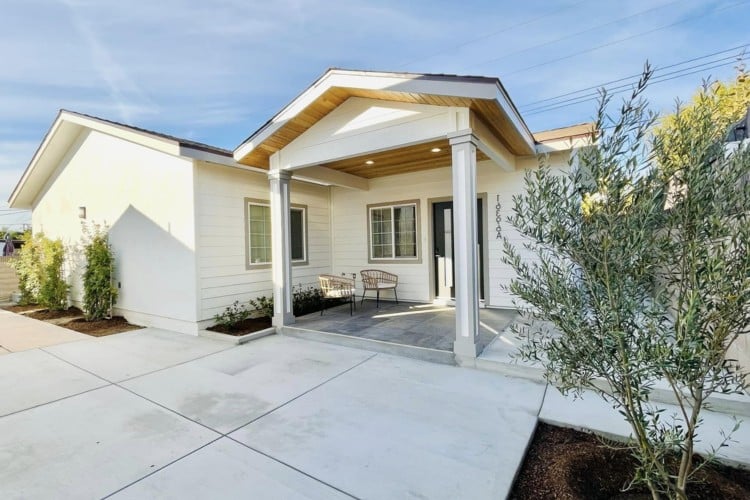How Big Can an ADU Be in California?
23 min read
Accessory dwelling units (ADUs) have continued to grow in popularity in recent years, and for good reason. Formerly known as ‘mother-in-law’ suites or ‘granny flats,’ ADUs are an effective (and affordable) solution to the current housing shortage, offering residents affordable and functional places to call home. For this reason, California lawmakers have enacted legislation to encourage development, which leads many homeowners to wonder how big an ADU can be in California.

What Are the Legal Size Limits for ADUs in California?
With the ADU Law passed in California, California law allows for a maximum ADU size of 1,200 square feet. That said, local laws may differ.
California has three classifications for an ADU: detached, attached, and a repurposed existing structure. Each of these builds has a set of minimum and maximum square footage assigned to them, which can also depend on the size of the lot or the main house.
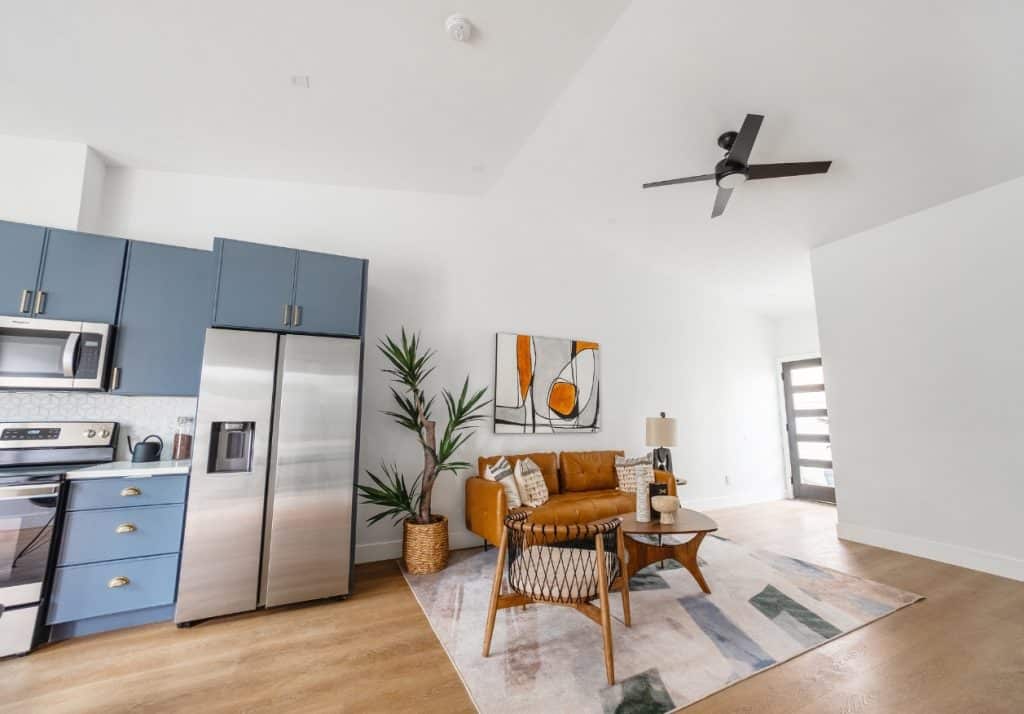
Smaller ADUs, when thoughtfully planned, solve housing challenges by creating affordable, livable spaces without overwhelming the property.
Some of the general size limits include:
- Detached ADUs can range from 800 to 1,200 square feet, with potential for up to 3 bedrooms. General size limits include 800 sq. ft. for standard units, 850 sq. ft. for one-bedroom units, and 1,000 sq. ft. for 2 or more bedrooms.
- Attached ADUs can be up to 50% of the primary structure’s square footage, with a maximum of 1,200 square feet. The same size limits apply: 850 sq. ft. for one bedroom and 1,000 sq. ft. for 2 or more bedrooms.
- Repurposed existing structure ADUs depend on the conditions of the existing building, but generally adhere to the same size constraints as detached and attached ADUs.
Homeowners should always check local codes as there can be additional restrictions or allowances. Having knowledge pertaining to these regulations can help ensure compliance with local jurisdictions and help with the success of the project.
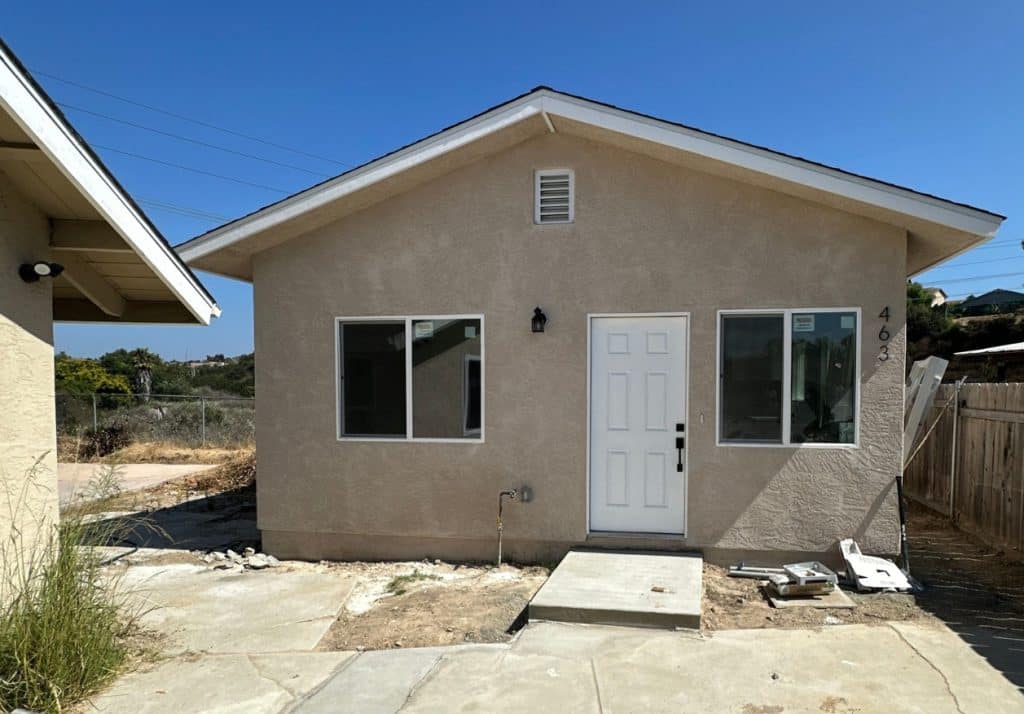
Navigating legal size constraints ensures ADUs remain compliant while offering maximum living space for residents.
ADU Size Limits Based on Property Size
Restrictions on square footage for ADUs are based on local codes. However, the property itself needs to be taken into account and analyzed. There’s some flexibility in different types and designs of ADUs, which provides homeowners with a greater opportunity to find a solution that fits their property. On larger properties, building a detached ADU may be more practical, while on smaller properties, an attached or repurposed ADU might be the better option. Ultimately, the decision should be determined by factoring in the logistics and regulations specific to the property (including utilities locations), as well as personal preferences.
ADU Size Regulations in San Diego and Surrounding Areas
Local jurisdictions like those in San Diego, Coronado, La Mesa, and other surrounding areas may have specific ADU codes that can differ from state law. The guidelines set by the state are a baseline, but many cities adapt them to fit their unique zoning codes and housing demands. The local jurisdictions may not alter the maximum size of the unit on the property, per se, but there can be additional variances that impose restrictions on use, making it essential to check the local zoning codes. These codes will provide detailed information on any specific size limits, design standards, and permitting processes that apply in your area. Our ADU regulations pages are designed to help guide you through these details!

Tailored zoning codes in San Diego and nearby areas reflect local housing priorities, shaping ADU opportunities.
Different Types of ADUs and Their Size Constraints
Each type of ADU comes with its own set of opportunities and challenges. Therefore, educating yourself on the varying aspects and regulations in advance before adding an ADU to your property is the wisest move. The first thing to know is that each type of ADU has its own distinct size constraints. Learning which type of unit is possible on your property by contacting your local municipality’s building permits office should be your first action step.
Detached ADUs
Detached ADUs typically offer the most flexibility in size. Homeowners can build these standalone units up to 1,200 square feet, allowing for ample living space and multiple design options. This flexibility makes detached ADUs a popular choice for creating a separate rental unit or guest house.
Attached ADUs
Attached ADUs are limited by the size of the existing structure. They can be up to 50% of the primary dwelling’s living area, but no larger than 1,200 square feet. This restriction means that the larger the main house, the greater the potential for a larger ADU. However, careful planning is required to ensure compatibility with the existing design and site.
Conversion ADUs
Conversion ADUs, which repurpose existing spaces like garages or basements, are usually smaller. They typically align with size limits for detached or attached ADUs but have the potential to be constrained by the existing space and layout. As a result, conversion ADUs tend to be more compact (think: studio) and are often designed to maximize functionality in a limited footprint.
ADU Size and Bedroom Count: How They Correlate
If you’re planning to build an ADU to generate rental income, it’s worth giving intentional consideration to the number of bedrooms you’ll have. This can significantly affect the rental price. Larger ADUs attract families or long-term tenants who may be willing to pay higher rates for extra space. In order to maximize space, an option to consider is an open floor plan that merges the kitchen and living areas while keeping bedrooms private.
One-bedroom ADU
One-bedroom ADUs typically range from 500 to 850 square feet. But don’t be dismayed—this square footage can still allow for a small kitchen, bathroom, and living area.
Two-bedroom ADU
Generally, two-bedroom ADUs begin at about 750 square feet, though they can be as big as 1,000 square feet. This slight increase in size from one-bedroom ADUs offers more flexibility for families or multiple occupants.
Three-bedroom ADU
Three-bedroom ADUs are a bit of a rarer sight, but they do exist—especially if they’re built on a larger lot. At a minimum, these units are about 1,200 square feet.
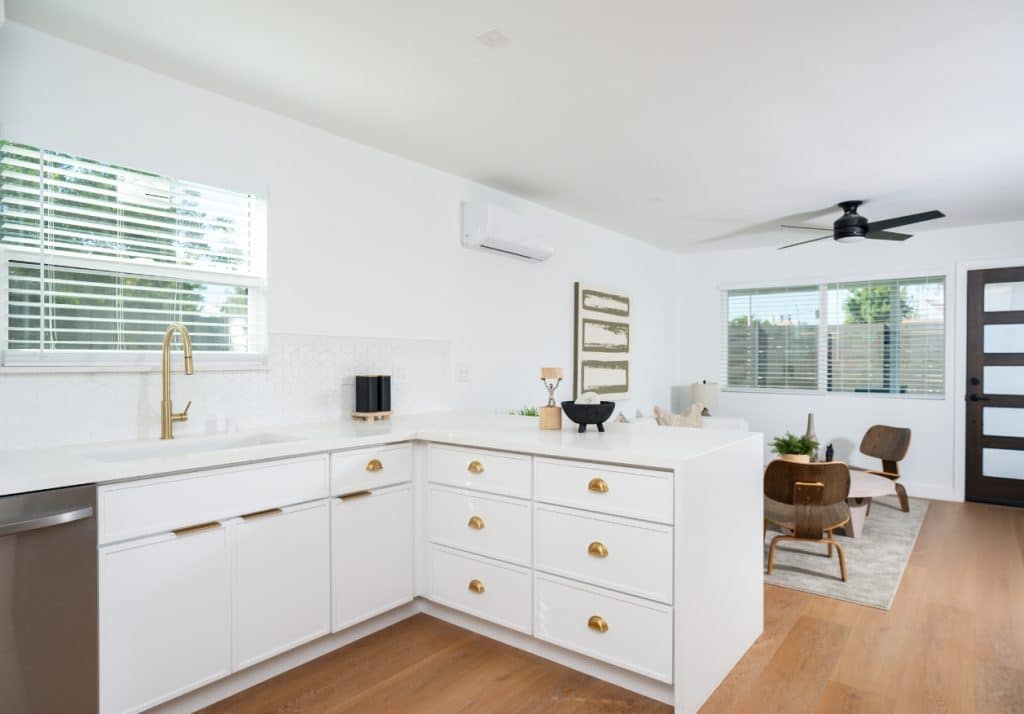
Strategic bedroom layouts within permitted sizes create flexible ADUs that appeal to diverse tenant needs, from singles to families.
ADU Size Ratings by Square Footage and Bedroom Count
Understanding how square footage correlates with bedroom count is essential for designing an ADU that balances functionality, comfort, and compliance. Each size category offers unique opportunities, from compact one-bedroom units to spacious multi-bedroom layouts, allowing homeowners to tailor their ADU to specific needs and property goals.
| Square Footage | Number of Bedrooms | Ideal Use Case |
|---|---|---|
| 400-600 sq. ft. | Studio | Perfect for single occupants or couples. Minimal footprint. |
| 600-850 sq. ft. | 1 Bedroom | Suitable for small families or rental purposes. |
| 850-1,000 sq. ft. | 2 Bedrooms | Ideal for families or long-term tenants. More living space. |
| 1,000-1,200 sq. ft. | 2-3 Bedrooms | Maximum allowable size in most cases, spacious for large families. |
Height Restrictions for ADUs in California
Generally speaking, California state law restricts the height to 16 feet for an ADU. However, double-check with local jurisdictions because most impose additional restrictions. The height of an ADU can increase to 18 feet in certain circumstances, such as when it is located within 0.5 miles of a major transit stop or a high-quality transit corridor.
In San Diego specifically, homeowners with single-family properties are permitted to build ADUs up to two stories—provided they meet specific zoning and setback requirements. This vertical expansion is particularly advantageous for those on a limited site, allowing for more living area without significantly increasing the footprint of the property. Certain jurisdictions can enforce ADUs to match the height of the main dwelling. Overall, this can offer homeowners greater design flexibility and allow the ADU to blend seamlessly with the existing structure.
Maximizing ADU Size: How to Work with Lot Setbacks
In California, state law mandates a standard 4-foot side and rear yard setback for ADUs. However, these setbacks can vary based on lot size and local zoning codes, so it’s crucial for homeowners to check specific local regulations. In order to maximize square footage, many homeowners consider vertical expansion to adhere to the setback requirements. Setbacks can be creatively used for things like landscaping, small gardens, or outdoor seating—enhancing the overall aesthetic of the ADU.
Common Mistakes to Avoid When Planning ADU Size
- Ignoring Setback Requirements Failing to account for the 4-foot side and rear yard setbacks can lead to redesigns or permit denials.
- Underestimating Height Restrictions Oftentimes, homeowners overlook local height limits, which can restrict vertical expansion options. This can result in plans that don’t comply with zoning regulations.
- Neglecting Local Variances Some homeowners might assume state regulations apply universally, missing local ordinances that may impose stricter requirements.
- Overlooking Design Compatibility Not considering how the ADU will fit aesthetically and functionally with the existing home can detract from property value and curb appeal.
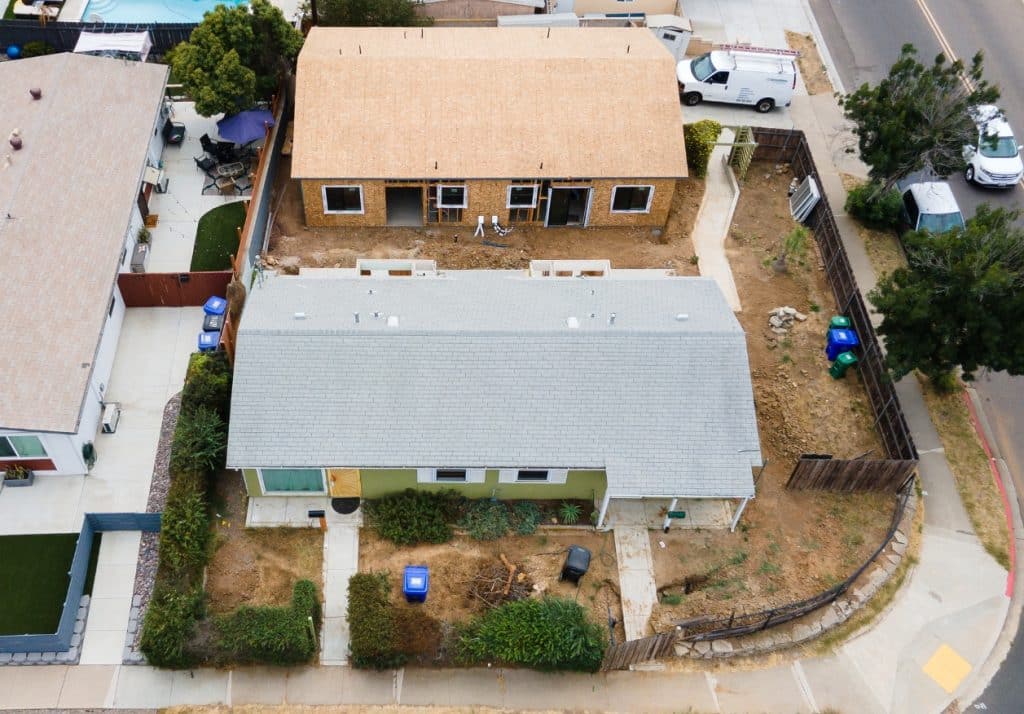
Innovative design approaches, such as vertical builds, ensure setbacks are respected while maximizing usable ADU space.
Frequently Asked Questions About ADU Size in California
With 20 years of local expertise, specifically in the San Diego market, we've got answers to your questions. Below, you'll find answers to size limits, navigating garage spaces, and building two-story units.Generally, no, it cannot be larger. It’s allowed to be 50% of the square footage of the main residence. However, there are always exceptions to the rule. This would most likely require special permits or other creative solutions to maximize the size.
Garage space does not count toward the square footage of an ADU. The reason is that a garage is not considered a “living area,” therefore it’s excluded from the total ADU measurement.
Yes. You can build a two-story ADU in California, but you should check with your local codes to see if there are any additional guidelines to follow (i.e. height restrictions or distance from property lines). Additionally, some neighborhoods may have specific design standards, so it’s worth reviewing those as well to ensure your ADU aligns with local requirements.
Building the Perfect-Sized ADU for Your Property
In California, detached ADUs can be built up to 1,200 square feet, attached ADUs are limited to 50% of the primary dwelling’s living area, and conversion ADUs are limited by the existing structure. In order to have a successful project, the setbacks and building height need to be accounted for in the design phase as well as following both local and state laws.
Ensuring compliance not only prevents potential legal issues but also enhances the value of your property. Ready to explore building an ADU that meets your needs and complies with your jurisdiction’s building codes? We’re the ones for the job. Contact Better Place and schedule a free estimate today to discuss your options!

